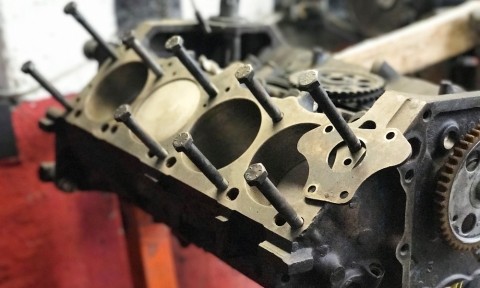
What is an engine block?
Content
What is an engine block (and what does it do)?
The engine block, also known as the cylinder block, contains all of the major components that make up the underside of the engine. Here the crankshaft rotates, and the pistons move up and down in the cylinder bores, ignited by the combustion of fuel. In some engine designs, it also holds the camshaft.
Usually made of aluminum alloy on modern cars, usually made of cast iron on older cars and trucks. Its metal construction gives it strength and the ability to efficiently transfer heat from combustion processes to the integrated cooling system. The aluminum block usually has a pressed iron bushing for the piston bores or a special hard coating applied to the bores after machining.
Initially, the block was simply a metal block holding the cylinder bores, water jacket, oil passages, and crankcase. This water jacket, as it is sometimes called, is an empty system of channels through which coolant circulates in the engine block. The water jacket surrounds the engine's cylinders, which are usually four, six, or eight, and contain the pistons.
When the cylinder head is fixed to the top of the cylinder block, the pistons move up and down inside the cylinders and turn the crankshaft, which ultimately drives the wheels. The oil pan is at the base of the cylinder block, providing an oil reservoir from which the oil pump can draw and supply oil passages and moving parts.
Air-cooled engines, such as the old VW four-cylinder engine and the original Porsche 911 sports car engine, do not actually have a cylinder block. Like a motorcycle engine, the crankshaft rotates in engine cases that are bolted together. Bolted to them are separate ribbed cylindrical "jugs" in which the pistons move up and down.

Common problems with engine blocks
The engine block is a large, precision machined piece of metal designed to last the life of the vehicle. But sometimes things go wrong. Here are the most common cylinder block failures:
External engine coolant leak
A puddle of water/antifreeze under the engine? This can be caused by a leak from the water pump, radiator, heater core, or a loose hose, but sometimes it's from the engine block itself. The block may crack and leak, or the plug may loosen or rust. Frost plugs can be easily replaced, but cracks are usually incurable.
Worn/cracked cylinder
Eventually, after hundreds of thousands of miles, the smooth machined cylinder walls wear down to the point where the piston rings can't fit well. In rare cases, a crack can form on the cylinder wall, which will quickly lead to the need for engine repair. Worn cylinders can be bored out more to accommodate oversized pistons, and in a pinch (or in aluminum blocks) iron liners can be inserted to make the cylinder walls perfect again.
Porous engine block
Caused by impurities introduced into the metal during the manufacturing process, voids in a casting often do not cause any problems for a long time. Eventually, a poorly molded block may begin to leak and leak either oil or coolant from the defective area. You can't do anything to a porous engine block because it will be defective from the day it is cast. However, any leaks that may occur due to the porous block should be minor, and if they are found during the manufacturer's warranty period, the motor should be replaced free of charge.

